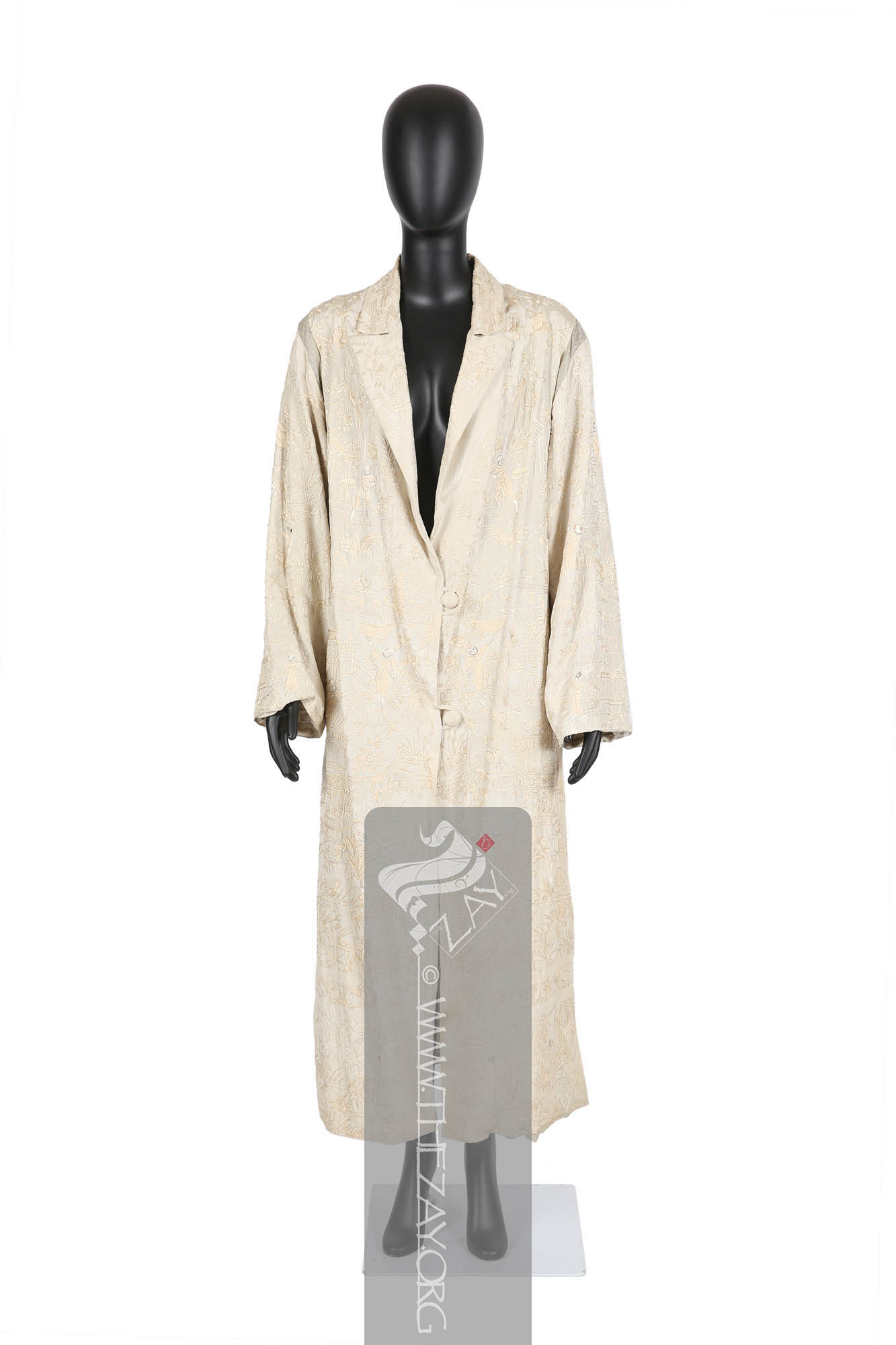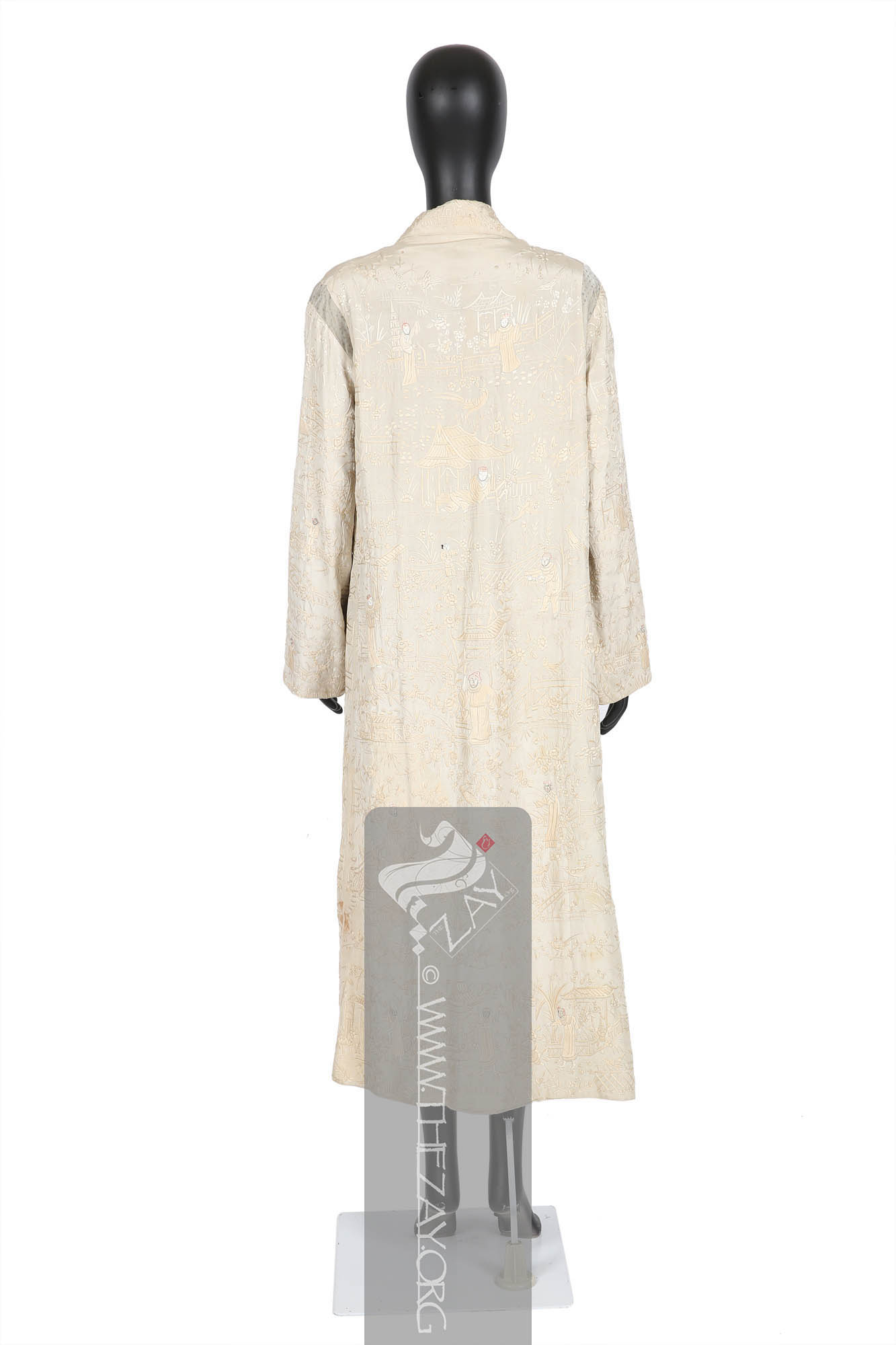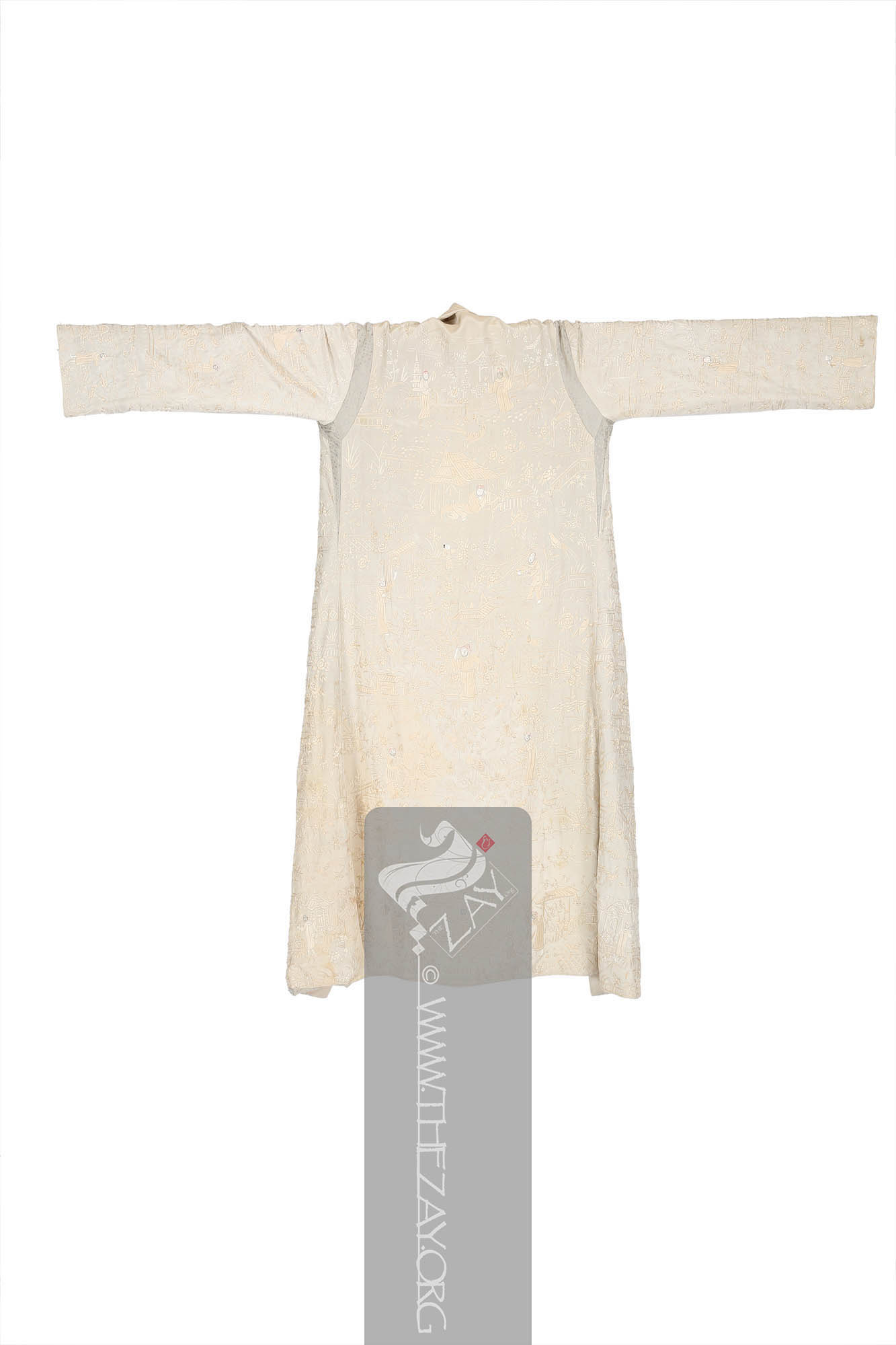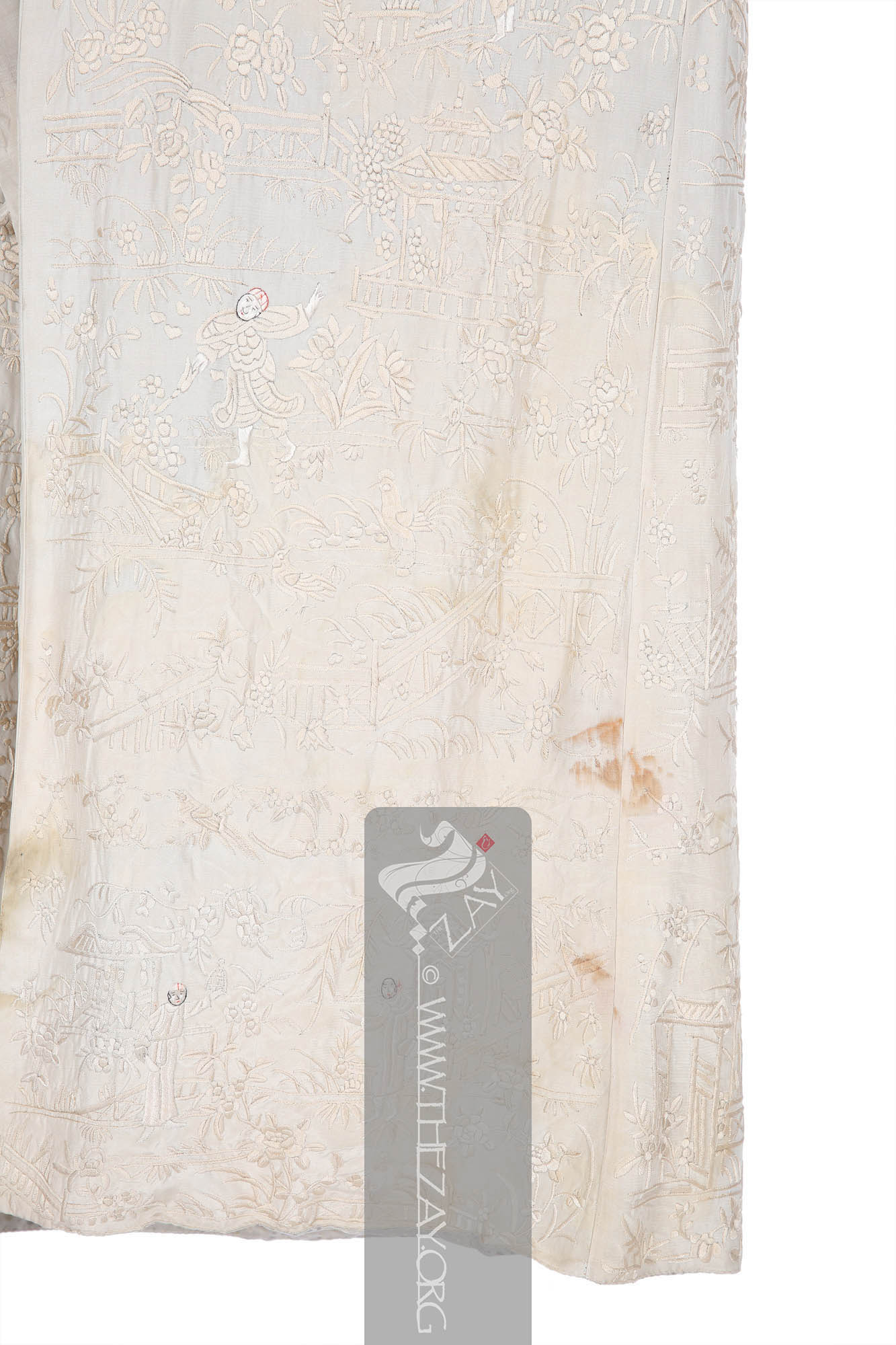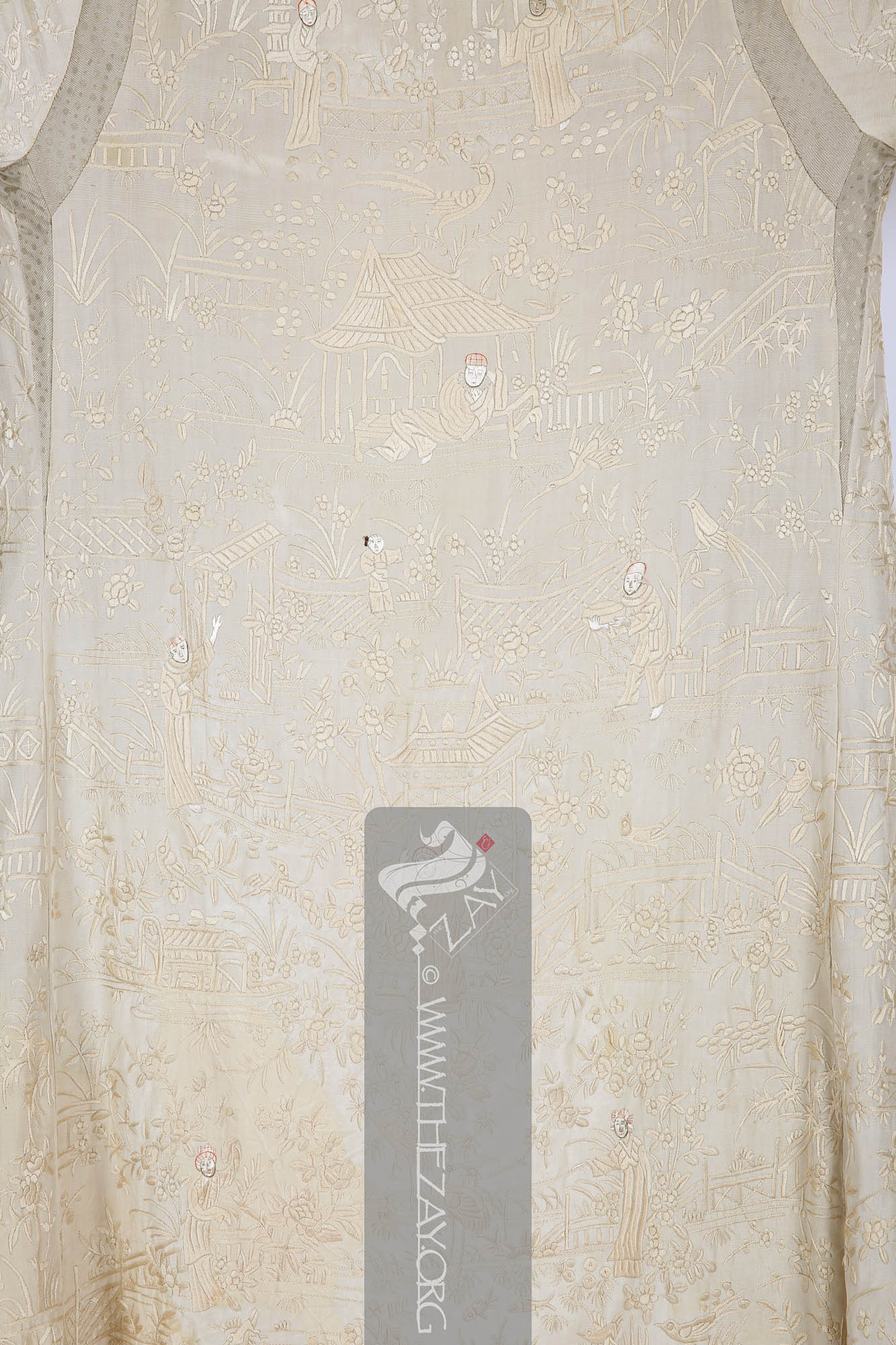Object HistoryThis exquisitely embroidered silk women’s long coat or jacket was purchased in London by Dr. Reem El Mutwalli in 2015. The sleeves were adjusted at the shoulder joint, for ease of wear, and the article was lined with a
satin
Sātin: (Arabic: Zaytuni: from Chinese port of Zayton in Quanzhou province where it was exported from and acquired by Arab merchants), one of the three basic types of woven fabric with a glossy top surface and a dull back. Originated in China and was fundamentally woven in silk. (
damask
Dāmāsk: (Arabic: Damascus – a city in Syria), is a luxurious fabric woven with reversible patterns typically in silk, wool, linen, or cotton. Originating in China, the fabric was perhaps introduced to European traders at Damascus – a major trading post on the Silk Road with a thriving local silk industry. ) fabric with a repeat of a small circular motif. It was eventually added to the
Zay
Zay: (Arabic: costume, Pl. azyaā’), a set of clothes in a style typical of a particular country or historical period. Initiative collection.
Object Features This beautiful and delicate ankle-length woman’s long coat is constructed of an ivory silk fabric in (
satin
Sātin: (Arabic: Zaytuni: from Chinese port of Zayton in Quanzhou province where it was exported from and acquired by Arab merchants), one of the three basic types of woven fabric with a glossy top surface and a dull back. Originated in China and was fundamentally woven in silk.) weave. The jacket is heavily embellished all over with (
satin_stitch
Satin_stitch: (Synonym: Damask Stitch), is a type of flat embroidery stitch that creates a satin like smooth and shiny surface by closely spaced stitches, covering an entire area or shape.) embroidery executed by hand in ivory thread with red and black highlights.
Although not much is known about its history or provenance, with its lapelled collars and long-lose fit, the cut and construction conforming to Western style and aesthetics it was possibly made for a Western wearer. It has a small pocket on the underside of the front opening and has large flat buttons covered in the same fabric. In fact, it could very well have been made outside of China. What is however clear is the fact that the fabric of the jacket was made in China.
The main field of the jacket is packed with embroidered embellishment in ivory silk
floss
Floss: (Old French: flosche – nap of velvet), is a type of silk fibre obtained from the cocoons of wild silkworms. It is characterized by its long, fluffy fibers that are not tightly woven, making it ideal for use in various textile applications such as embroidery, lace-making, and sewing. threads. It depicts an idyllic countryside with pagodas, Chinese gardens, flora, and fauna. The significance of this piece is the presence of 365 human figures also in ivory silk
floss
Floss: (Old French: flosche – nap of velvet), is a type of silk fibre obtained from the cocoons of wild silkworms. It is characterized by its long, fluffy fibers that are not tightly woven, making it ideal for use in various textile applications such as embroidery, lace-making, and sewing. except for their facial features which are embroidered with black and red threads to highlight them.
It is believed that these human figures each representing a child for each day of the year would work its charm as a form of totem to make a childless woman bear children.
Links 



